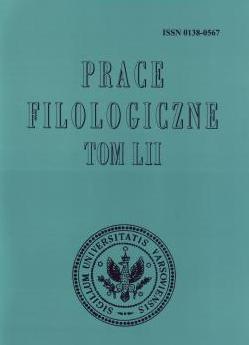Ewolucja form mianownikowych liczebników głównych wyższego rzędu (na przykładzie liczebników typu {dwieście – pięćset})
The Evolution of Nominative Forms of Higher Order Cardinal Numerals (On the Basis of {dwieście - pięćset} Numerals)
Author(s): Izabela StąporSubject(s): Language and Literature Studies
Published by: Wydział Polonistyki Uniwersytetu Warszawskiego
Keywords: historia języka polskiego; liczebniki główne; fleksja; history of the Polish language; cardinal numerals; inflection
Summary/Abstract: The aim of the present article is the analysis of nominative forms of higher order cardinal numerals used in the Polish language from the 16th century until the beginning of 20th century. The material for the research was data taken from dictionaries of Polish language, grammar books and Polish translations of the Bible. The analysis of all the types of data shows that in the period in question a considerable decrease of nominative variation took place in the case of old compound numerals such as {pięćset - dziewięćset}. The first signs of masculine personal nominative forms which were syncretic with the genitive appear in the 17th century in the numeral {dwieście} whose first element was the numeral dwa. Only from the beginning of the 20th century one can talk about masculine personal nominative forms which are compliant with the contemporary langauge norm. The 16th -19th century Polish grammar books should not be considered as a reliable illustrative material for the research of higher order numerals, while the Bible, due to its religious character, retained the old numeral forms for the longest time.
Journal: Prace Filologiczne
- Issue Year: 2007
- Issue No: 52
- Page Range: 339-350
- Page Count: 12
- Language: Polish

